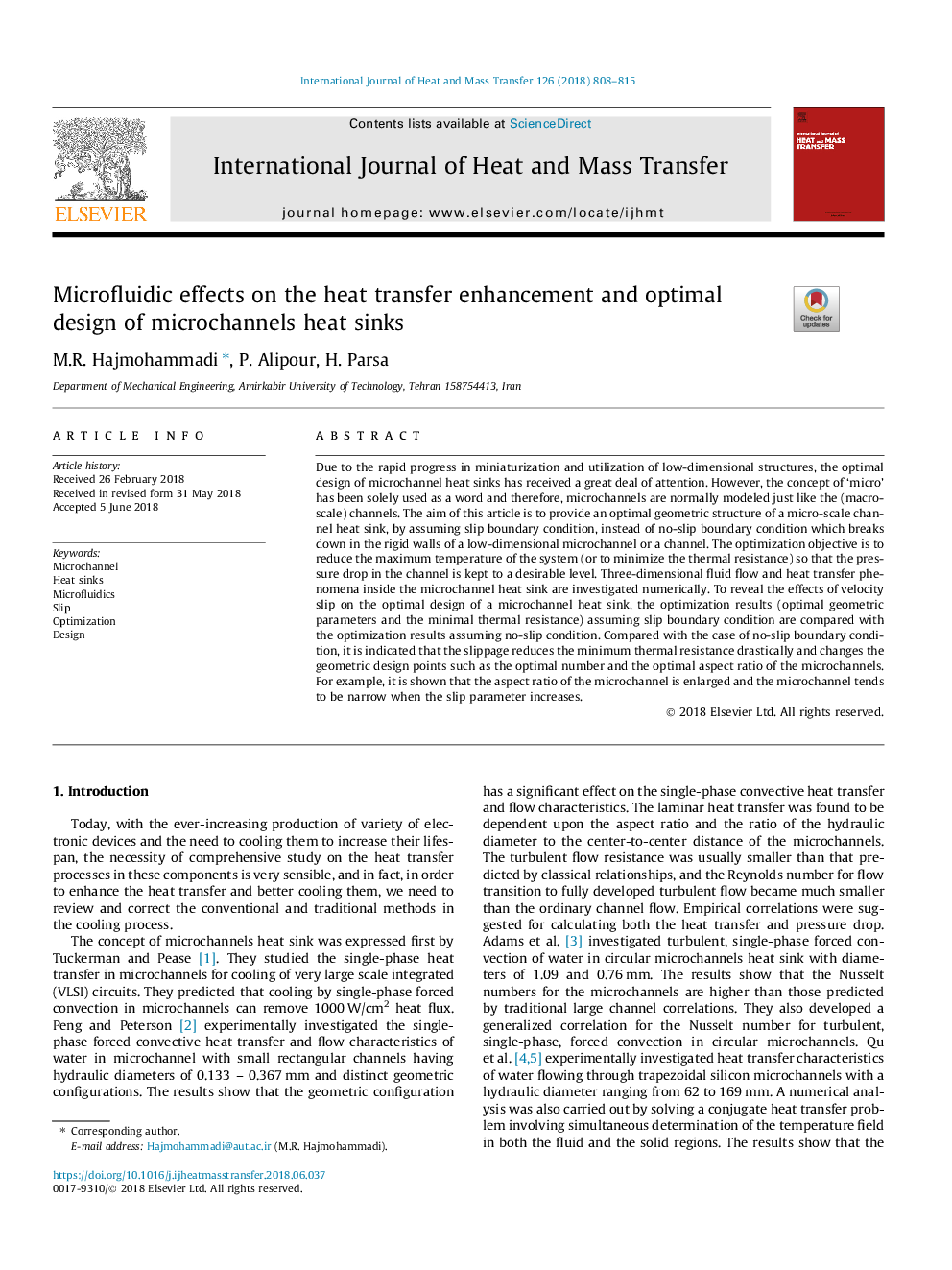| Article ID | Journal | Published Year | Pages | File Type |
|---|---|---|---|---|
| 7053910 | International Journal of Heat and Mass Transfer | 2018 | 8 Pages |
Abstract
Due to the rapid progress in miniaturization and utilization of low-dimensional structures, the optimal design of microchannel heat sinks has received a great deal of attention. However, the concept of 'micro' has been solely used as a word and therefore, microchannels are normally modeled just like the (macro-scale) channels. The aim of this article is to provide an optimal geometric structure of a micro-scale channel heat sink, by assuming slip boundary condition, instead of no-slip boundary condition which breaks down in the rigid walls of a low-dimensional microchannel or a channel. The optimization objective is to reduce the maximum temperature of the system (or to minimize the thermal resistance) so that the pressure drop in the channel is kept to a desirable level. Three-dimensional fluid flow and heat transfer phenomena inside the microchannel heat sink are investigated numerically. To reveal the effects of velocity slip on the optimal design of a microchannel heat sink, the optimization results (optimal geometric parameters and the minimal thermal resistance) assuming slip boundary condition are compared with the optimization results assuming no-slip condition. Compared with the case of no-slip boundary condition, it is indicated that the slippage reduces the minimum thermal resistance drastically and changes the geometric design points such as the optimal number and the optimal aspect ratio of the microchannels. For example, it is shown that the aspect ratio of the microchannel is enlarged and the microchannel tends to be narrow when the slip parameter increases.
Related Topics
Physical Sciences and Engineering
Chemical Engineering
Fluid Flow and Transfer Processes
Authors
M.R. Hajmohammadi, P. Alipour, H. Parsa,
